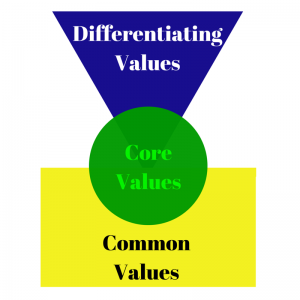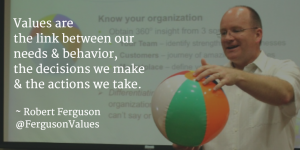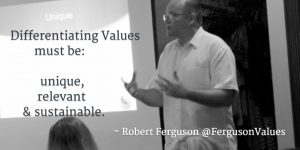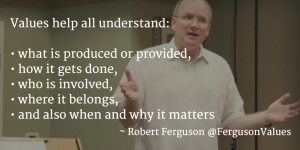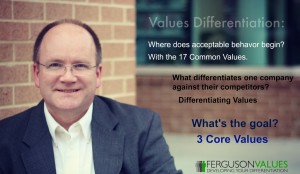Wise Leaders Respect What’s Sacred
 Some leaders are known to be like a bull in a china shop. When they’re hired to lead a new organization, they delight in decimating the place. Employees are fired. Vendors are squeezed. Business units are sold or shutdown.
Some leaders are known to be like a bull in a china shop. When they’re hired to lead a new organization, they delight in decimating the place. Employees are fired. Vendors are squeezed. Business units are sold or shutdown.
The new leader claims their actions are in the name of restoring or improving “shareholder value.” While often they may demonstrate short-term gains, the truth is that once that which is sacred has been destroyed and employee morale is shattered, the game is over. History has proven such leaders are not successful over the long term.
But wise leaders act with care.
When a wise leader is hired, the first thing they look to identify are key assets. They ask questions, such as:
– How is real value created here?
– Who are the people who create the value?
– What sets this company apart from its competitors?
– What do customers, employees, and even vendors respect most about this organization and the brand?
The Value of Sacredness
Leaders who act rashly love to find the “sacred cows” and burn them.
However, wise leaders carefully look for what is truly sacred to ensure it’s preserved. They understand the importance of the value of sacredness.
This is how sustainable organizations preserve their history. Some examples include:
- 3M preserving its history of innovation
- Coca-Cola preserving its legacy of being community-centric
- McDonald’s preserving its brand of making food fast
- Wal-Mart preserving its focus on low prices
- VISA preserving its legacy of being accepted everywhere
Uncovering What is Sacred
So, how does a leader uncover what is sacred?
- Worthy of respect. Identify the items, both tangible and intangible, that are most respected by everyone. Dig into the history behind it and understand the stories that surround it. Uncover the truth that defines the brand.
- Worthy of dedication. Ascertain what employees celebrate, either formally or informally. Often there are company jokes that surround it, which suggest that it’s important.
- Devoted exclusively to single purpose. Every organization has one or more roles, activities, or functions that if they disappeared an important legacy would be gone. It’s important to recognize and preserve them.
- Set apart. There’s always a reason something seems odd or out-of-place. Find out why no one has addressed it before. Uncover the story and understand its impact upon the team.
Of course leaders must create change. Change is good. But wise leaders recognize what can and should be changed, and what is sacred and should be preserved. If something sacred does need to be removed, discarded, or replaced it’s the leaders job to understand the impact it will have upon the organization, both the short-term and long-term.
As a leader, what do you respect that is sacred, and why?
Today’s value was selected from the “Devoutness-Purity” category, based on the e-book Developing Your Differentiating Values.


